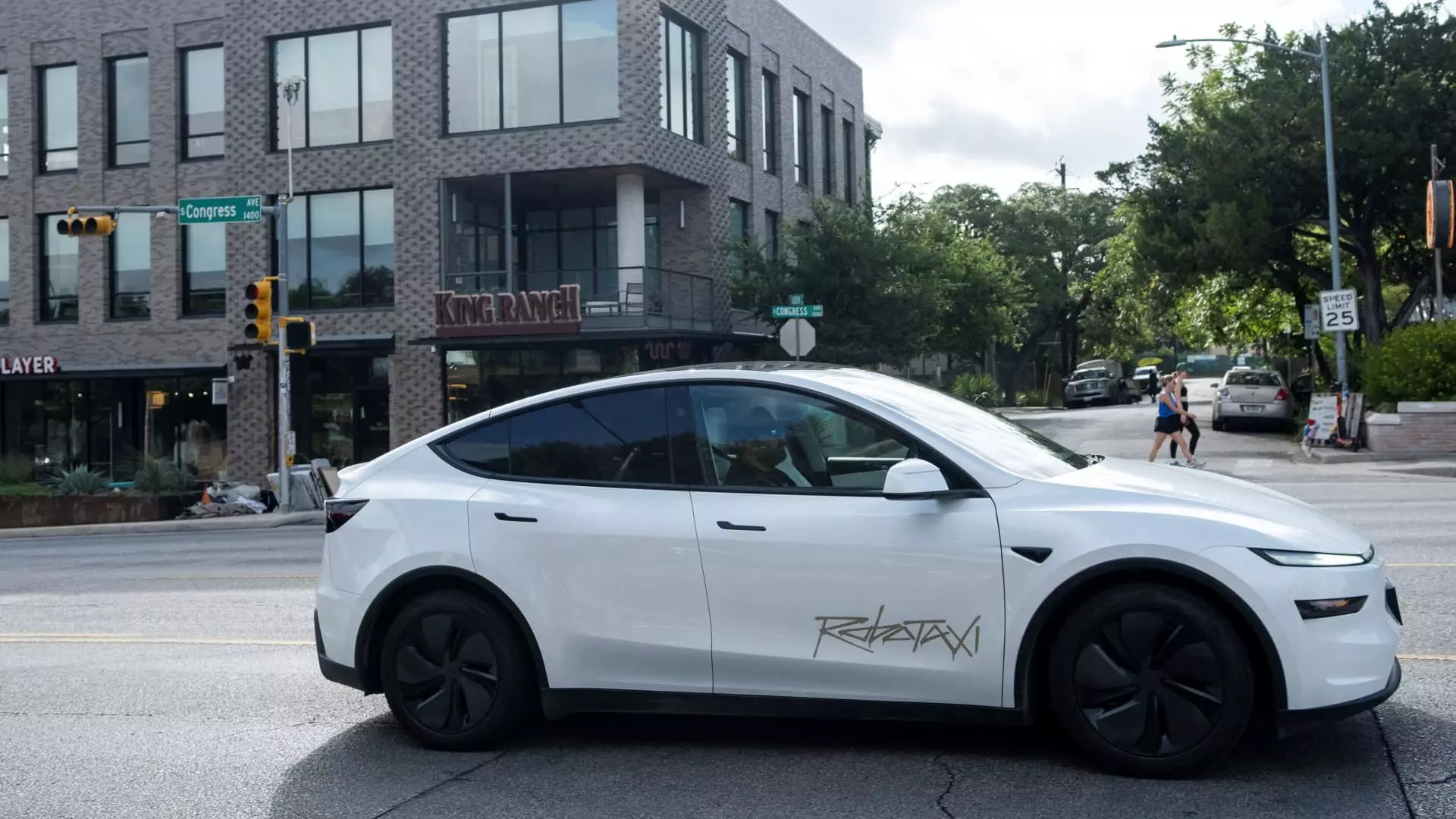The recent foray of Tesla into the autonomous vehicle sector, particularly the unveiling of its robotaxi service in Austin, Texas, is shrouded in chaos and concern. Videos circulating on social media depict the robotaxis driving erratically—one reportedly traveling against traffic while others brake abruptly in the presence of stationary police vehicles. Such behavior is hardly the hallmark of a reliable self-driving vehicle and raises immediate questions about the decision-making process that led to this limited rollout. Tesla, under Elon Musk’s leadership, has positioned itself as a trailblazer in the electric vehicle market, yet the recent incidents suggest a premature leap that could jeopardize both consumer safety and the company’s reputation.
Federal Scrutiny and Safety Standards
The National Highway Traffic Safety Administration (NHTSA) has reacted quickly, issuing inquiries to Tesla following these troubling reports. Their approach is justified; safety must always take precedence, especially when introducing unproven technologies to the public. It’s crucial to note that Tesla relies on self-certification when claiming compliance with federal safety standards, leaving much of the evaluation burden on the company itself. This presents a glaring conflict of interest: an organization tasked with pushing the boundaries of technology is also responsible for ensuring its safety. Past investigations into Tesla’s Full Self-Driving (FSD) technologies highlight the gravity of the situation; allegations of safety defects with prior models indicate a concerning trend. As Tesla’s offerings are pushed onto the public, the fundamental question arises: is the risk worth the reward?
Invitations vs. Accountability
What’s perhaps most disconcerting about Tesla’s robotaxi program is the rollout to a select group of “invited” users. These individuals, who often are prominent supporters of Musk and the Tesla brand, may lack the impartiality needed to provide unbiased feedback on the service’s efficacy and safety. By prioritizing early access enthusiasts—many of whom are brand evangelists over the general public—the company risks creating an echo chamber that overlooks critical safety and performance flaws. Instead of transparent accountability, investors and consumers alike should be wary of a strategy that prioritizes branding over safety in a field as consequential as autonomous driving.
The Deceptive Promises of Autonomy
Elon Musk has long touted ambitious timelines concerning Tesla’s path to full autonomy. Historically, these pledges have been met with skepticism; promises made in 2015 and 2016 about cars achieving full autonomy have yet to materialize, and timelines consistently slip further into the future. The ambitious claims that Tesla would mass-produce over a million robotaxi-ready vehicles by 2020 have turned out to be a grand illusion. While Tesla reaps short-term stock gains from these announcements, the disconnect between promises and reality is increasing skepticism and frustration among potential customers and investors alike.
Facing Competition and Reality
While Tesla grapples with its aspirations, it’s crucial to consider the competition. Rivals such as Waymo have already made substantial strides, recently surpassing 10 million paid rides. International competitors like Baidu’s Apollo Go and Pony.ai are also swiftly advancing their own robotaxi services. Tesla’s delay in delivering a truly reliable autonomous solution contrasts starkly with the success of these competitors, further complicating its narrative as the market leader in this burgeoning field. Any hope that Tesla might retain a competitive edge is quickly evaporating, revealing a much larger implication of its chaotic launch in Austin.
The Broader Implications of Autonomous Technology
The introduction of robotaxis does not exist in a vacuum; it’s part of a larger conversation about technology, safety, and responsibility. As autopilot technologies emerge, the ethical and regulatory landscapes must evolve in tandem. The ethical implications of introducing potentially unsafe technologies into public domains cannot be overstated. The push for autonomy should not overshadow the necessity for rigorous safety assessments and accountability mechanisms. Public trust is fragile, and any misstep in this journey could undermine broader societal acceptance of autonomous vehicles, impacting not just Tesla but the entire industry.
Tesla’s robotaxi ambitions are marred with alarming discrepancies between promise and reality. If they wish to navigate this complex landscape successfully, they must confront these issues with urgency and integrity. The eyes of regulators, investors, and the public will be watching closely.

